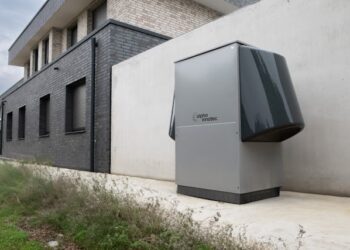Roofing insurance is one of the most important investments a homeowner can make, yet it’s often overlooked until a storm hits or a leak suddenly appears. The truth is, your roof is one of the most exposed parts of your home, and damage can occur unexpectedly, whether it’s caused by the weather, an accident, or simply the wear and tear of time.
Why Do You Need Roofing Insurance?
Financial Protection from Unexpected Damages
The fundamental reason for having roofing insurance is very straightforward: it keeps your money safe. In case you do not have the appropriate coverage, the expenses for roofing repair or replacement will be turned into a big money outlay very quickly. For example, if your roof has leaked due to a heavy rain or it has been damaged by a storm, and tiles have been ripped off, the money required to fix these issues can, in fact, go beyond thousands of pounds very easily. Roofing insurance is a kind of protection against this financial risk, thus you do not have to pay for the unexpected repairs from your own pocket. Besides that, if the situation calls only for a small repair or a complete roof replacement, insurance will be the one to cover the cost, thus giving you the freedom to concentrate on keeping your home safe and secure.
Peace of Mind
Beyond the financial protection, roofing insurance offers peace of mind. Imagine coming home after a heavy storm and finding your roof has been damaged. The thought of dealing with contractors, filing claims, and coming up with the funds to repair your roof can be overwhelming. With insurance, however, you know you’re covered, and the stress of having to pay out-of-pocket is eliminated. Roofing insurance also protects you from damage caused by vandalism, accidental impacts, and other unpredictable incidents, ensuring your roof remains in top shape without constant worry.
Next, we will discuss in detail different kinds of roof insurance coverages, insurances that most times cover, and how to select the suitable policy for your place. Besides that, we will clarify the most common myths about roof insurance so that you can be aware of them when deciding to protect your roof.
Different Types of Roofing Insurance Coverage and What They Mean
Insurance can be a bit tricky, especially for the roof. There isn’t a standard package that would be perfect for everyone. The nature of your protection needs can be so vastly different that even the difference between two policy types can make a substantial difference to the protection that the roof will have. These are some of the typical kinds of insurance that roofs can be insured against. You can now choose which type is suitable for your place after reading the article.
Full Replacement Coverage vs. Partial Coverage
By far the most extensive form of roof insurance is a full replacement policy. Such a policy implies that if your roof is so damaged that it cannot be saved, the insurer will pay for the total replacement of the roof. It is appropriate, for instance, for old buildings or places where the weather is frequently very bad, and thus the damage to the roof can be substantial.
On the other hand, partial coverage most of the time indicates that only certain kinds of damages or repairs will be taken care of. For instance, if your roof is only slightly damaged, then partial coverage will assist you in fixing that little part, but it won’t provide you with the money for a complete replacement. Maybe it is a decision of the homeowners with new roofs or those living in areas with stable weather.
Deciding between these two would require you to think about the age and condition of your roof, besides the intensity of weather phenomena in your area. Although full replacement coverage provides the greatest protection, partial coverage may be a cheaper alternative for a newer roof, which is less likely to be completely replaced.
Exclusions and Limitations
Roofing insurance may provide a lot of protection; however, it is still necessary to know that the insurance will not cover all the damages. Usually excluded are those situations where the damage is a result of normal use, poor maintenance, or wrong installation. In case your roof has been kept in a bad condition or hasn’t gone through proper maintenance, the insurance will not pay for the repairs caused by such situations.
Moreover, the majority of the policies will not cover damages resulting from causes that are beyond your control, such as bad construction or not meeting local building codes. Before having any claim, ensure that you have checked the details of your policy to make sure there is no surprise.
The Importance of Regular Inspections
Regular inspections are a must in most insurance policies if you want your roof to be covered. Such inspections not only allow you to manage the risks but also indicate that you have been diligent in taking care of your roof. A lot of insurance companies give discounts to homeowners who can prove that their roof has been regularly inspected, so it is definitely worth the money.
Indeed, having your roof checked once in a while can be a great way to keep your roof in good condition for a longer time and also be sure that you are going to get covered in case you file a claim. Inspections are in a position to find those small issues that can lead to costly repairs if they are ignored, thus they help in saving money and in stopping the problem from getting bigger.
What’s Covered Under Roofing Insurance?
Roofing insurance is a kind of protection that pays for the wherewithal against a wide variety of mishaps that are out of the blue. Typically, roofing insurance is liable for those damages that mostly occur to the roof, such as:
Storm Damage:
Nothing can be blamed more for a damaged roof than extreme weather. It does not really matter if it is a hailstorm or heavy gusts of wind, or even a snowstorm out of nowhere; these very events can be the enemies of your roof. In general, missing tiles, punctured surfaces, and water leaks are what storm damage will leave on your roof, and of course, it can be quite expensive to fix the damage. Roofing insurance takes care of roofing repair or replacement expenses after a storm, and so, it is one of the most effective ways to avoid the expense of a repair that is too costly for you to be able to handle alone.
Leaks and Water Damage:
Without a question, water damage is the reason for roof leaks, and the issue will become more serious as the roof gets older. In most cases, leaks that occur during a heavy downpour or damage caused to roofing material are the main reasons for structural damage inside the house. Generally, roofing insurance provides for the payment of repair work for leaks and water damage that affect the roof and its supporting structures. With the help of this insurance, you may avoid the intervention costs on both the roof and interior of your property, which can be quite high.
Vandalism or Accidental Damage:
It’s away from the closest thing to certainty that vandalism or accidental damage may happen if only your roof is beside trees and the environment around you is a place where accidents are likely. If your roof is damaged by falling debris, vehicles, or any other move that is not a result of natural causes, the roof insurance policy may see to it that you get the cost of the repair. As an illustration, if a tree branch falls on your roof, causing it to be damaged, typically, a roofing insurance policy will be the one to cover the cost of repairing it.
Fire Damage:
Even though it is the rarest of cases, fires may be the reason for your home’s roof, and the flames can either be direct or the smoke and heat can cause damage. Besides, most of the roof insurances in their portfolio have a section for this kind of case, which is very important for homes situated in areas that are easily attacked by bushfires or any other fire hazards. A fire-induced disaster coverage of the kind you have is what guarantees that your roof can be repaired to its initial state once it is damaged by fire.
Roofing Insurance vs. Warranty
That should be kept in mind that roofing insurance and warranties are two separate kinds of protection. Roofing insurance is the loss/damage cover caused by the weather, accidents, and vandalism, which are external forces, while a roofing warranty most probably is a cover for the contractor’s defects in materials or workmanship.
Although a warranty is generally given by the manufacturer or the roofing contractor, roofing insurance is a different policy that also covers a wide variety of situations besides those mentioned. In such cases where there could be damage caused by sudden events. Therefore, a homeowner needs to have both the warranty and the insurance: the first to cover defects in the work and the materials and the latter to protect the house from external damages.
How to Choose the Right Roofing Insurance for Your Property
Deciding on the best roofing insurance to get starts with identifying the particular risks of your property. Different houses face different types of risks, and the fact that your roof is old or new, is situated in a certain place, and that there is good or bad weather will determine the amount of the cover you need.
Roof Type and Material
The amount of protection offered by the roof will depend on the material used in its construction. It might be that a slate or metal roof is more robust and less likely to suffer storm damage than one made of traditional tiles or asphalt shingles. When picking a policy, you have to be sure of what kind of roof you have as there are those that may be covered under certain policies, while others might have higher premiums due to the cost of their repair or replacement.
Location and Climate
Your living place is a crucial factor in determining the kind of insurance you require. Generally, homes situated in localities that are exposed to storms, strong winds, or hail will need to have a more comprehensive roofing insurance policy. In case you live in a region where the weather is usually severe (e.g. hurricanes, snow, heavy rainfall), check whether your insurance policy covers the damages that result from the storm and the flood. Besides, homes surrounded by trees or located in areas that are susceptible to wildfires should be adequately insured against fire or falling branch damage.
Age of Your Roof
The roofs that are old have more chances of being damaged, so considering their age while choosing a policy is of great importance. It might be the case that you will need full replacement coverage if your roof is at the end of its lifespan, so as to be certain that you will not be left with a large repair bill. Conversely, if your roof is still new, you might only get partial coverage that will focus on accidental damage rather than the full replacement.
Comparing Different Policies
After you have evaluated the risks of your roof, the following step would be to compare various insurance policies. Roofing insurance is not the same for everyone; thus, it is very important to understand the exact details of each offer.
Policy Limits and Deductibles
Look at the policy limits and deductibles to grasp the maximum amount that you can be given in the case of a claim. The coverage that you are getting should be enough to fix or change the whole of your roof. Moreover, be careful with the deductible amount; as a higher deductible may result in a lower premium, the increase in your out-of-pocket costs will be greater if you make a claim.
Exclusions and Add-Ons
Ensure that your policy has no areas where it could come up short in terms of risks. The policies may exclude the damages caused in certain ways or require add-ons for specific coverage. For instance, damage caused by floods may not be included in the regular roofing insurance, thus requiring a separate rider or add-on. Take the time to check that your coverage is not leaving any gaps so that you will not be caught off guard with unpleasant surprises later on.
Premiums and Discounts
Although the idea of dropping the coverage to have a low premium is not good and you still need to look around for the best policy that suits you financially. Some insurance companies give discounts when you install an impact-resistant roof, for example, or when your roof is newly built. By talking to your insurer about the available discounts, you will be able to make a decision that is right for you, reducing your premiums while not compromising on coverage.
Debunking Roofing Insurance Myths
There are numerous myths about roofing insurance, which can confuse a lot and result in incorrect decisions by homeowners. Knowing that these myths are false will help you to make the right decision when selecting your roofing insurance policy.
Protect Your Roof – and Your Future – With the Right Insurance
Roofing insurance should be considered one of the most vital ways to protect your home. It helps in shielding you from the heavy financial burden that may come as a result of unexpected roof damages due to storms, fire, or any other unforeseeable incidents. Knowing the three different types of coverage, understanding what is covered, and getting the right policy for your home will make a safe and secure place for your property.
Just in case you want to be fully covered for a complete replacement or you only wish to cover a few minor repair works, having the right insurance at hand will give you peace of mind and protection for a long time.
Confused about the most suitable roofing insurance policy for you? Our team is always here to help you by answering all your questions and providing custom quotes. Don’t wait until a disaster hits to find out if your roof is covered.






